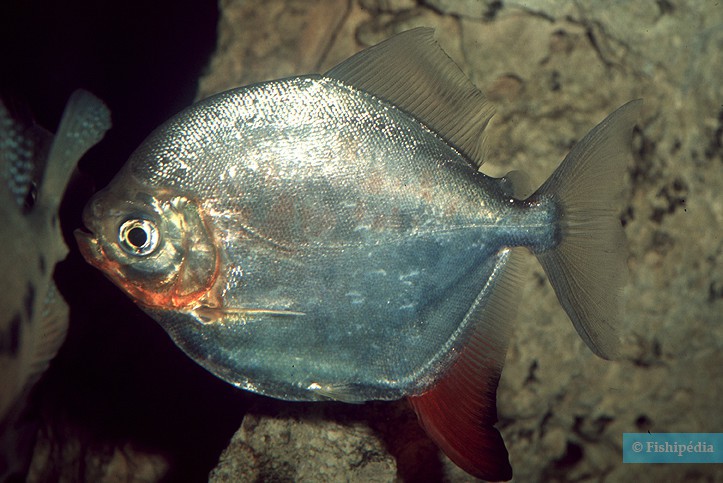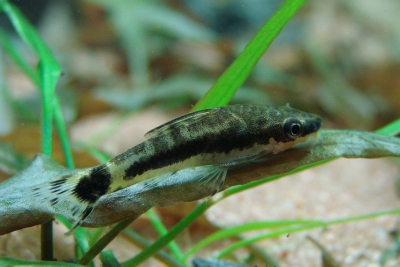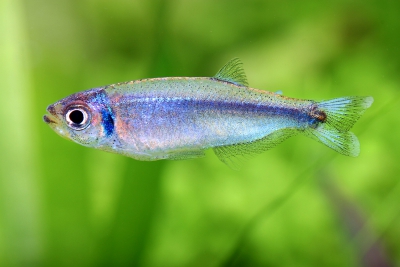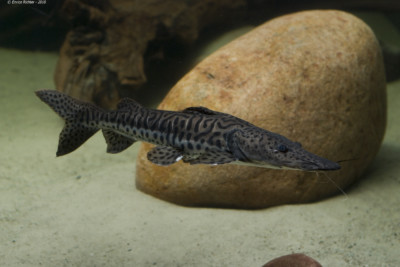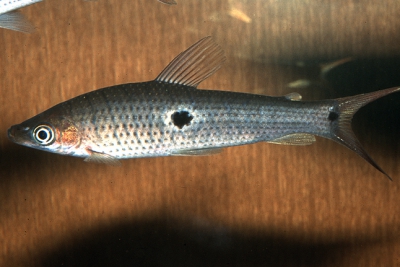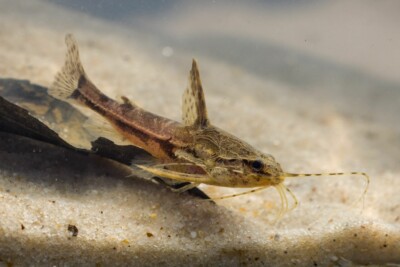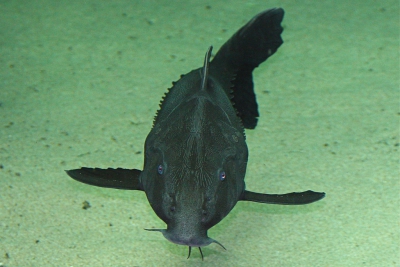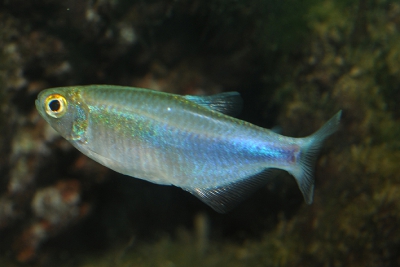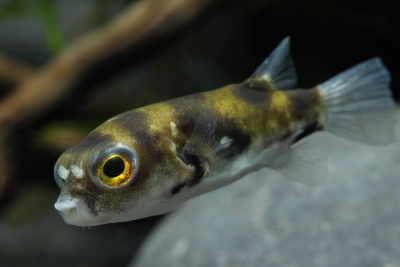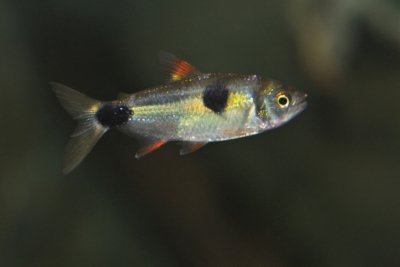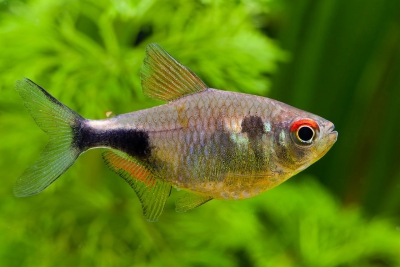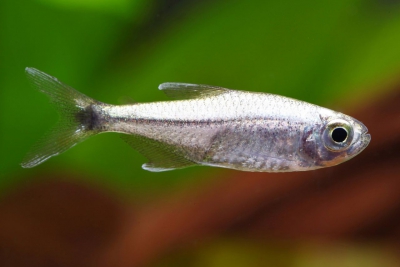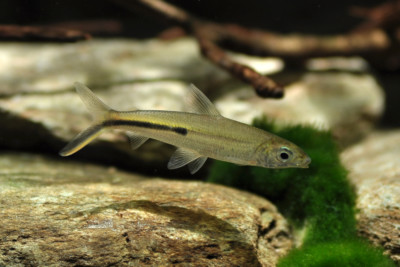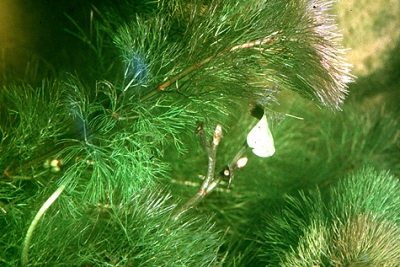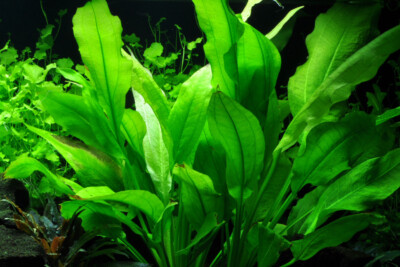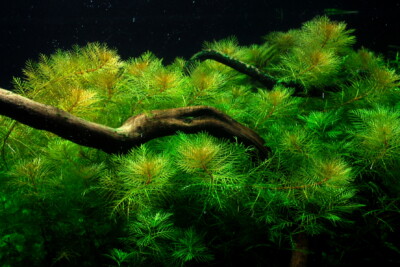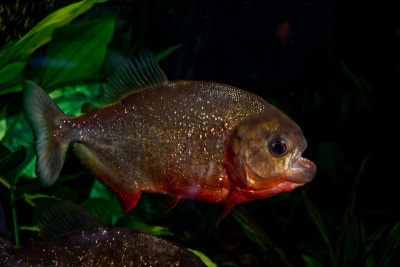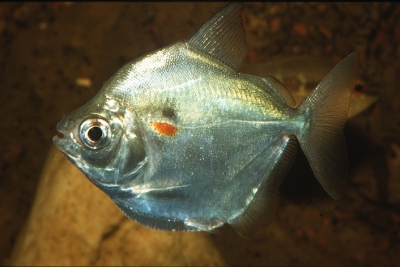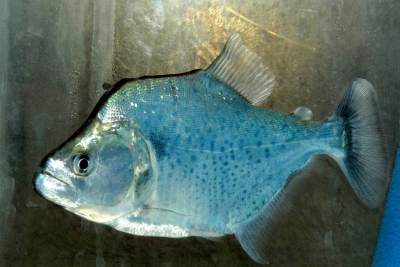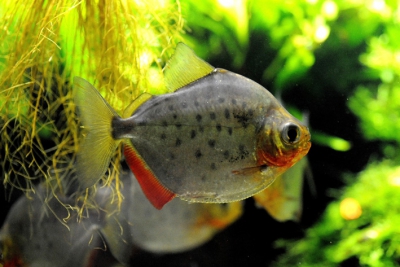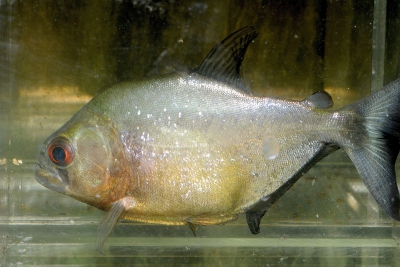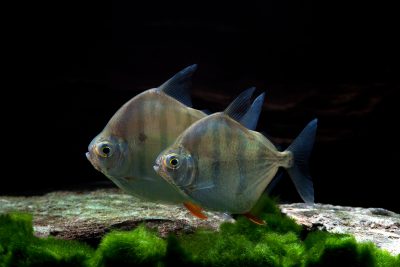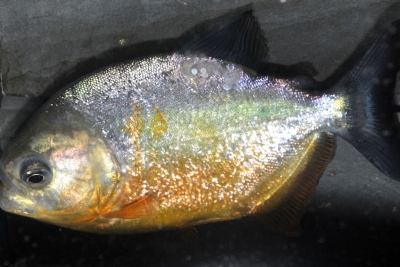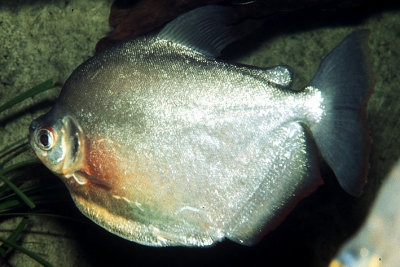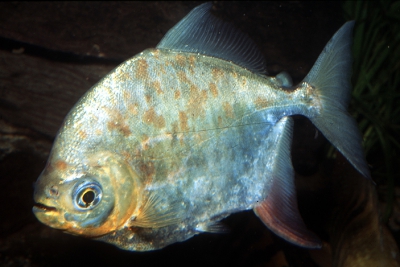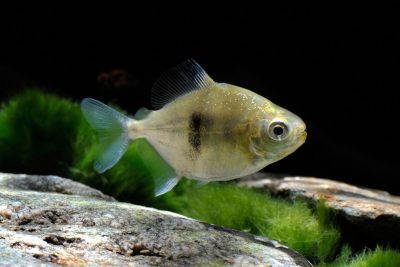Myloplus rubripinnis
| Scientific name | Myloplus rubripinnis |
|---|---|
| Descriptor | Müller & Troschel |
| Year of description | 1844 |
| IUCN category (World) | LC |
| Family | Serrasalmidae |
| Genus | Myloplus |
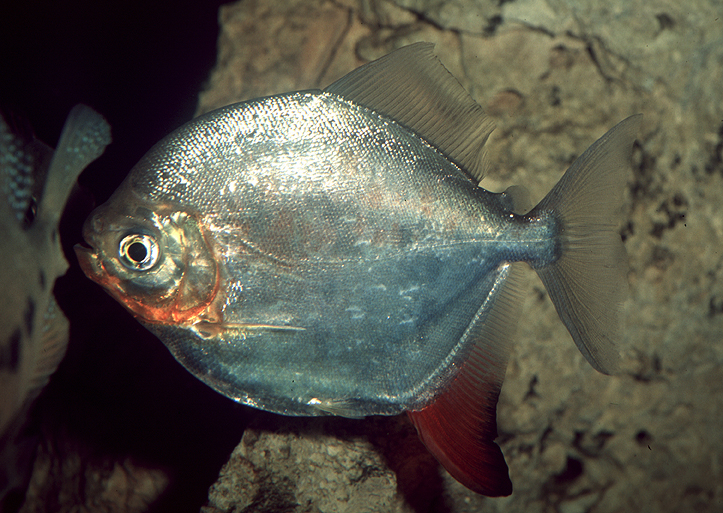

Introduction
Myloplus rubripinnis is a fresh water fish from the Amérique du Sud.
This sheet is currently being prepared. The texts currently proposed come from our data model or are being drafted. To request priority for this content, you can write to us HERE.
Who is it?
Morphology
-
Average size35 cm
-
Maximum size41.5 cm
-
Longevity10 year
-
Average size35 cm
-
Maximum size41.5 cm
-
Longevity10 year
How to recognize This fish ?
Myloplus rubripinnis measures between 35 and 41.5 cm. This fish is unicolore with a predominantly rouge and argent body.
Sexual dimorphism
The females have a more rounded abdomen than the males, they are generally stockier. This characteristic is exacerbated in the period of reproduction.
Behaviour & Life cycle
-
dietherbivorous
-
Sociabilityliving in small groups
-
territorialNo
-
Way of livingdiurnal
Myloplus rubripinnis is a fish living in small groups naturally found at mid-depth. This species is herbivorous .
n general, this species does not care much about other animals crossing its path.
Reproduction
-
Reproductionovipare qui enfouit ses œufs
Myloplus rubripinnis is a fish ovipare qui enfouit ses œufs.
Risks for humans
-
VenomousNo
-
BiteYes
This species can attack if it feels threatened. It is important to be particularly vigilant especially during dives or fishing sessions.
Origin and distribution
What is its habitat?
Natural environment characteristics
-
Temperature22 - 27 °C
-
pH (acidity)5 - 7
-
gh (hardness)3 - 10
-
FlowSlow and Stagnant
Biotope presentation
The acidification of water comes from the decomposition of plants. This phenomenon changes the color of the water, which tends to turn brown. In some areas particularly rich in organic matter, the water is so dark that it is called "black water".
This animal evolves in areas characterized by a strong presence of vegetation (aquatic and marsh plants, decaying organic matter, roots...).
Species of the same biotope
Main recommendations for fishkeeping
Deontology
In order to preserve wildlife, if you acquire this animal, it must not be released into the wild. See also, the Fishipedia charter.
Fishipedia supports the practice of responsible and environmentally friendly aquarium keeping. We encourage maintenance if it is motivated by a desire to understand the biological functioning of living things and if it is done with respect for animal life.
We believe that aquaristics is an opening to the discovery of aquatic environments, especially freshwater, and that this knowledge is necessary to better protect and respect these environments. Logically, we refute the compulsive purchase of animals that would not find a sufficient and / or adapted place in the host aquarium.
Our recommendationsThese tips apply to adult species from breeding. With regards to water conditions, wild species or close relatives must be kept under the same conditions as in their area of origin.
-
Min volume1000 liters
-
Population min5
-
Temperature22 - 27 °C
-
pH (acidity)5 - 7
CharacteristicsThe characteristics below apply for adult species. They correspond to an average of cases, validated in maintenance condition.
-
Difficulty breedingThe farming difficulty is relative. It depends on experiments already carried out with similar species. First, it takes into consideration the robustness of the species, the ease of recreation of a favorable environment and the general behaviour with the other inhabitants of the aquarium.easy
-
Robustnessrobust
-
Behaviourpeaceful
-
Availabilityoccasional
General reminders
It is strongly advised to read the complete dedicated file and to get information on the feedbacks of maintenance of the envisaged animal, this to avoid any potential conflict whose end result is generally the death of the individual (or the other inhabitants). It is important not to overload your aquarium to limit pollution. This will make maintenance easier.
In nature, animals are subject to weather conditions and live in waters with variable characteristics. The recommendations offered by our team for aquarium maintenance are a guidance and cannot be assimilated to scientific datas.
General reminder on maintenance datas
Le démarrage d'un aquarium est une partie primordiale pour l'équilibre et le bien-être des poissons. Lorsque l'on met en eau un aquarium, l'eau passe naturellement par un cycle biologique : le cycle de l'azote. Celui-ci dure environ trois semaines. Tous les 2 jours, nous vous conseillons de tester votre eau jusqu'à ce que le taux de nitrite soit à zéro pendant plusieurs jours d'affilée.
Pour accélérer ce cycle, vous pouvez utiliser un activateur de bactéries comme JBL Denitrol. Cette solution riche en bactéries vivantes et enzymes permet une mise en place rapide du cycle de l'azote. Les poissons peuvent alors être introduits plus rapidement.
Il est important de tester l'eau de son aquarium régulièrement pour maintenir un environnement sain pour les poissons et les autres habitants. Les tests d'eau permettent de mesurer les niveaux de différents paramètres tels que le pH, la dureté totale, ainsi que les taux de nitrates, de nitrites et d'ammoniaque.
Pour réaliser ces tests, vous pouvez utiliser des produits d'analyse spécialisés tels que JBL ProScan qui permet de réaliser un diagnostic de l'eau directement via un smartphone. Il existe également des coffrets de tests plus classiques de bandelettes, comme JBL PROAQUATEST.
En cas d’usage de l’eau du robinet, vous pouvez utiliser un conditionneur d’eau de type Biotopol de JBL pour éliminer les substances nocives comme le chlore, le cuivre, le plomb et le zinc. Les conditionneurs d'eau garantissent une meilleure santé aux poissons et une meilleure croissance des plantes.
Chlorine and chloramine are dangerous for the health of animals. Used to disinfect water, these agents are present in significant quantities in tap water. We recommend using an anti-chlorine agent every time you change the water. In addition to chlorine, treatments and medicines sold for aquarium use sometimes contain dangerous heavy metals in high doses.
Specific needs for Myloplus rubripinnis
Myloplus rubripinnis is a species which lives naturally at a temperature between 22 °C and 27 °C. For proper maintenance, the temperature should never exceed the 30°C for long periods. Nitrate levels should remain below 50mg/L. To keep the water clean and unpolluted, plan on changing 20% to 30% of the water volume each month.
Breeding this species is accessible to any hobbyist. It is recommended to follow some basic rules and to be rigorous to achieve a good maintenance.
This species is generally available in specialized shops or from aquarium clubs. Specimens that have been bred for a long time are easier to breed, but special water parameters must be respected.
Formal incompatibilities
Cohabitation & Environment
Being a living in small groups fish, it is advisable to install at least 5 individuals in an aquarium of 1000 liters minimum (for 200 cm of frontage). Group maintenance is a prerequisite to ensure their well-being. Lonely individuals tend to quickly become stressed and become especially susceptible to disease. Although sometimes certain groups can "merge", mixing several gregarious species living in the same zone of life is not recommended if the volume is not consequent.
Myloplus rubripinnis is a peaceful species that generally does not exhibit behavioral problems in a community aquarium.
Be careful, this species does not appreciate plants and will end up destroying, uprooting or nibbling them. It will not be possible to make an aquarium planted in its presence.
Acid Water Maintenance
Myloplus rubripinnis living naturally in acidic water, generally in "black" or "sieved" water, the implementation of a filtration on peat is ideal for its balance. Adding decaying leaves and alder fruit can significantly improve living conditions by naturally increasing acidity of some water.Tips for feeding
Myloplus rubripinnis is herbivorous.
This species can eat dry food (flakes, pellets), fresh food and frozen food. To avoid deficiencies, it is recommended to vary the types of food.
You should not overfeed your residents to avoid polluting the water. For most species, it is better to feed a few small portions each day rather than one large meal.
Food recommendations from our partner JBL - Products PRONOVO
-
Granules
-
Flakes
Reproduction protocol
-
egg-laying protectionNo
Hybridization risks
In general, it is advised not to mix several species of the same genus or different varieties of the same species, to avoid the risks of hybridization.
These animals might interest you
These plants might interest you
Plants play a crucial role in aquariums, both for their ability to filter water by absorbing excess nutrients and for their aesthetic contribution. They provide fish with natural hiding places, can serve as breeding sites, and generally help maintain the overall balance and optimal conditions of the aquarium. The selection presented here includes species from the same regions as the species described on this page, although they do not necessarily come from its exact natural biotope.
To go further
Sources & Contributions
Participation & Validation
The Fishipedia team and specialist contributors are committed to providing high-quality content. However, although the information comes from scientific sources or testimonials from specialists, the cards may contain inaccuracies.

Robert Allgayer

Adrien Falzon
Translation
Translation done with the valuable contribution of our translators, who make this information available to a wider audience. We sincerely thank them for their commitment.
In collaboration with : Estudios Amazónicos - Urku
Bibliographic references
A new species of Myloplus Gill (Characiformes, Serrasalmidae) from the Tumucumaque Mountain Range, Brazil and French Guiana, with comments on M. rubripinnis - MARCELO C. ANDRADE - MICHEL JÉGU - CECILE S. GAMA - ZOOTAXA - 2018.
PECES DE CONSUMO DE LA AMAZONÍA PERUANA - Carmen R. García Dávila - Homero Sánchez Riveiro - Mayra Almendra Flores Silva - Jose Eduardo Mejia de Loayza - Carlos Alberto Custodio Angulo Chávez - Diana Castro Ruiz - Guillain Estivals - Aurea García Vásquez - Christian Nolorbe Payahua - Gladys Vargas Dávil - J. Nuñez - Cedric Mariac - Fabrice Duponchelle - Jean-François Renno - Instituto de Investigaciones de la Amazonía Peruana - 2018.
Scientific partners
Species of the same family
Same genus
Species of the same biotope
